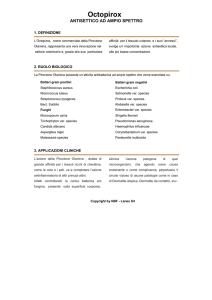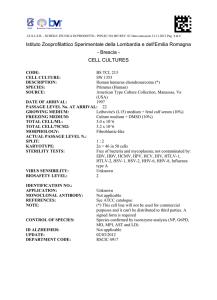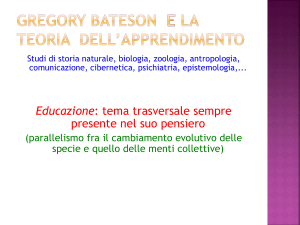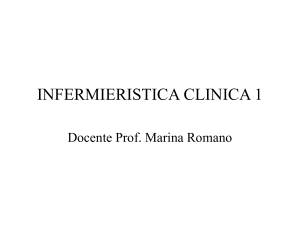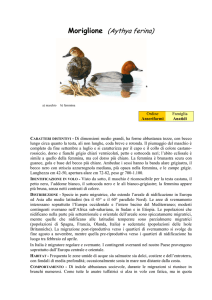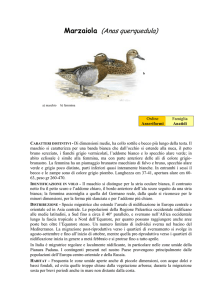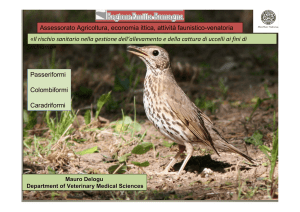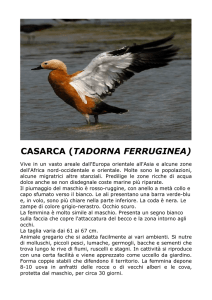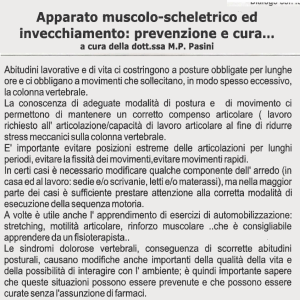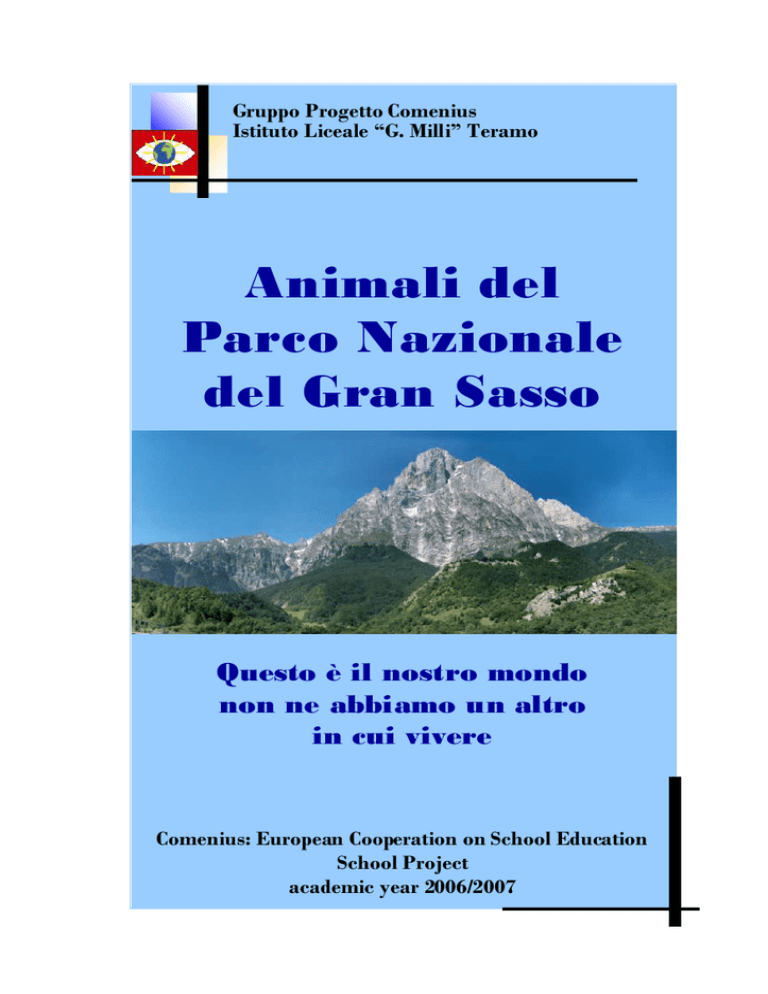
Gruppo Progetto Comenius
Istituto Liceale “G. Milli” Teramo
Animali del
Parco Nazionale
del Gran Sasso
Questo è il nostro mondo
non ne abbiamo un altro
in cui vivere
Comenius: European Cooperation on School Education
School Project
academic year 2006/2007
Logo del progetto Co menius
“This is our world,we have no other one to live in”
Proposto dagli studenti della scuola
Gimnazju m Eko logiczne nr 3
Bielawa
Polonia
Stampato in p roprio
Circolazione interna
Istituto Liceale “G. M illi” Teramo maggio 2007
Realizzato dal gruppo di lavoro “COM ENIUS”
dell’Istituto Liceale “G. M illi” d i Teramo
Progetto grafico:Luciano Troilo
TERAMO Il campanile del Duomo
FRINGUELLO ALPINO
Nome comune: Fringuello alpino
Specie: Montifringilla nivalis
Misure: La taglia media è di circa 15 cm di lunghezza, e 25
grammi di peso. A differenza del nome, è più simile alla
struttura dei passeri, che non dei fringuelli.
Abitudini e comportamento: In Italia è difficile che si
sposti dai luoghi in cui vive. Anche d'inverno preferisce
rimanere sulle quote alte, tranne avvicinarsi a posti
abitati per cibarsi degli avanzi. Uccello abbastanza
socievole, che non ha paura dell'uomo, anche perché
specie d'inverno, ne nutre un discreto beneficio.
Nidifica tra i mesi di Aprile e Luglio.
Alimentazione: Tende a frequentare le zone in cui vive
l'uomo, è onnivoro.
4
Common name: Alp ine Chaffinch
Species: Montifrigilla nivalis
Measures: the average length is about 15 cm and its weingh is 25
grams. Unlike ist name, it is mo re similan to the sparrow’s structure
than to the chaffinch’s.
Habi ts and behaviour: in italy it is difficult that it moves fro m the
places where it lives. Also in winter it prefers stayng on the high
altitude, sometimes it goes near settled areas in order to feed on
leftovers. It is sociable enough, it doesen’t fear the man, because in
winter it abtains a fair benefit. It nests fro m April to Ju ly.
Nutri tion: it tends to attend the areas where men live, it is o mnivorous
5
GAMBERO DI FIUME
Nome comune: Gambero di Fiume
Specie: Potamobius pallipes
Misure: lunghezza 11 cm
Abitudini e comportamento: Il gambero di fiume ha chele
molto sviluppate, cinque paia di zampe e una
colorazione bruno-verdastra. Scava tane sotto i sassi
sommersi o gallerie sulle sponde fangose, dove trascorre
il giorno per uscire all’imbrunire alla ricerca di cibo: è
attivo nelle ore del crepuscolo e dell’alba, mentre
trascorre quelle del giorno e della notte nella tana. E’
un animale lento, che può procedere velocemente solo
all’indietro spinto dalla coda, e pertanto non può
inseguire le prede che insidia. Durante la prima
settimana di vita il gambero di fiume compie la prima
muta che lo porta a staccarsi dal guscio con vari
movimenti e a rimanere privo di difese: dopo la muta
infatti il gambero rimane nascosto e immobile fino a
che non si è ricostituita la sua corazza. Il numero di
mute annuali varia con l’età ed è ovviamente più
numeroso durante i primi anni di vita, per seguire la
crescita. Un Gambero d fiume può vivere fino ai 20
anni. Il periodo della riproduzione inizia in
autunno:dopo l’accoppiamento la coppia si separa e la
femmina depone le uova in primavera e le tiene
6
attaccate alle appendici addominali fino alla schiusa,
riparandosi in un buco che scava nel terreno dove
rimane nascosta, emergendo solo con le due chele e le
antenne.
Alimentazione: Chioccioline d’acqua, vermi, girini, larve
di insetti, piccoli pesci, lombrichi, pulci d’acqua, altri
gamberetti, sanguisughe, vegetali e resti di animali
morti. Durante l’incubazione il 60% delle uova va
perduto per vari motivi.
Common name: Crayfish
Species: Patanobius pallipes
Measures: length:11 cm
Habi ts and Behavi our: Crayfish has got very developed chelas, five
pairs of legs and a brown-greenish colouring. Its burrow is under
submerged rocks a tunnels on muddy banks, which it leaves at dusk
in order to feed: it is active at dusk and at dawn,while it is in its
burrow by day and at night. It is slow animal, which can more fast
just backwards pushed by its tail, therefore it can’t pusul the guarry.
During the first week of life, it has its first ecolysis that leads it to
leave the shell and to be unprotected: after the ecolysis, in fact, the
crayfish remains hidden and motionless until the shell is re-formed.
The yearly number of ecolysis varies with the age and it is
obviously, more nu merous during the first years of life, to follow
the growth. A crayfish way live up to the age o f 20 years. Breeding
season starts in autumn: after it the mall and the female go their
separate ways. The female lays eggs in spring and keeps them tied
to the abdominal appendix up to the their opening, by sheltering in
a hole in the ground where it remains hidden and by emerg ing just
with the two chelas and the anternas.
Nutri tion: it feeds on small water snails, worms, tadpoles, grubs, small
fishes, water fleas, small crayfishes, leeches, vegetables etc. During
the hatching, 60% of the eggs is last for different reasons.
7
GATTO SELVATICO
Nome comune: Gatto Selvatico
Specie: Felis silvestris
Misure: 50 - 80 cm e la lunghezza della coda pari 28 - 35
cm.
Abitudini e comportamento: Viaggia solo di
notte,generalmente è solitario e territoriale. Ha una
speranza di vita media compresa tra i 12 e i 15 anni, e
raggiunge la maturità sessuale prima del gatto
domestico, attorno ai 10-12 mesi. Il gatto selvatico
completa il proprio sviluppo all'età di circa 3 anni. Il
gatto selvatico non forma coppie stabili: si accoppia in
primavera, la gestazione dura 9-10 settimane e la
femmina dà alla luce tra i 2 e i 4 piccoli (le gravidanze
singole sono rarissime); la madre resta coi piccoli solo
fi no al raggiungimento dell 'autosufficienza,
generalmente all'età di 3-4 mesi.
Alimentazione: Il gatto selvatico caccia prevalentemente
piccoli roditori, uccelli e rettili, ma non disdegna alcuni
insetti. Ottimo pescatore, generalemente riesce a
catturare piccoli pesci artigliandoli, dopo un paziente
8
lavoro di attese e appostamenti.
Common name: Wild Cat
Species: Felis silvestris
Measures: 50-80 cm long, its tail’s length is 28-35 cm long
Habi ts and behaviour: this animal is nocturnal generally solitary and
terrestrial. It has an average life of 12-15 years and reaches its sexual
maturity earlier than the domestic cat,around 10-12 months. The wild
cat comp letes its own development when it is 3 years old. It doesen’t
form stable couples: its breading takes place in spring; often a
gestation period of 9-10 weeks, 2-4 kittens are born (the single
pregnancy is rare); the female takes care of its kittens until they are
independent, generally when they are 3-4 months old.
Nutri tion: the wild cat tends to feed on small rodents,snokes and
reptiles but also insects. It can generally capture small fishes with its
claws often a patient wait.
9
GECO
Nome comune: Geco
Specie: Gekkonidae
Misure: 20-22 cm; 30-32 cm negli esemplari più grandi.
Abitudini: La maggior parte dei gechi è dotata di speciali
cuscinetti sulle zampe che consentono loro di
arrampicarsi su superfici verticali lisce e anche
introdursi sul soffitto delle case con facilità. Quando
interagisce con altri gechi emette sibili. Per cacciare,
rimangono completamente fermi fissando la preda e
scattano rapidissimi all'attacco dopo alcuni secondi o
addirittura minuti di attesa. Alcune specie si generano
per partenogenesi, con le femmine che sono capaci di
riprodurre senza accoppiarsi con il maschio. Questa
particolarità è la causa della grande abilità di diffusione
dei gechi su nuove isole. Si aggirano intorno alle luci
artificiali, sempre circondate da insetti.
Alimentazione: Si nutre di insetti e a volte anche di frutta.
Common name: Gecko
Species: Gekkonidae
10 cm for the biggest ones
Measures: length: 20-22 cm; ever 30-32
Habi t and Behaviour: most geckos are endowed with special pads
under their feet, these pads enable them to climb s mooth vertical
sunfaces and even cross indoor ceilings with ease. They make
chirping sounds in social interactions with other geckos. When then
hunt, they remain completely motionless staring at the quarry and
ju mp on it quickly after a-fen-second-or-minute wait. So me species
are parthenogenic, the fameles are capable of reproducing without
copulating with a male. This improves the geckos’ ability to spread
to new islands. They usually wander about artificial lights, always
surrounded by insects.
Nutri tion: this reptile feeds on insect and sometimes on fru it,too
11
RICCIO
Nome comune: Riccio
Specie: Erinaceus europaeus
Misure: Lungo circa 20-35 cm, di forma tondeggiante, con
il muso allungato e i denti disposti in file continue,
presenta occhi piccoli, orecchie piccole e tonde, e cinque
dita per ogni piede.
Abitudini e comportamento: Si sposta lentamente
soprattutto al crepuscolo e di notte, sebbene i giovani a
volte sono attivi anche durante il giorno. Se disturbato
si arrotola a palla. Costruisce nidi di erba, foglie secche
e muschio sul terreno, sotto densi arbusti (soprattutto
rovi), ma anche nei giardini. Nel nido trascorre il
periodo del letargo, da novembre a marzo, durante il
quale la temperatura corporea scende fino a quella
dell’ambiente esterno, le pulsazioni si riducono a circa
20 al minuto e le respirazioni a 10 al minuto. Nel nido il
riccio alleva i piccoli che partorisce una o due volte
l’anno in numero variabile da 2 a 10. Il periodo della
riproduzione va da aprile a settembre. Il riccio emette
12
suoni ronfanti, fischi e schiocchi. Vive fino a circa 10
anni.
Alimentazione: E’ un insettivoro ma si nutre anche di
vermi, lumache ed altri invertebrati.
Common name: Hedgeogh
Species: Erinaceus europeans
Misures: Body length rauges from 20-35 cm, it is a rounded creature
with a mobile pointy snout and teeth placed in continuous rows, it
has small eyes; small, rounded ears and five toes for each foot.
Habi t and Behavi our: it moves slowly, above all, at dusk and at night,
though the young are sometimes active also by day. It can roll into a
ball to defeund itself when it is attacked. It nests in brush piles, under
rocks or in other crevices but ever in gardens. It hibemates in its
winter burrow fro m November to March, during which its body
temperature is the same as the temperature of the outside
enviranment, its pulse drops up to about 20 a minute and its
breathing up to 10 a minute. In the burrow it takes care of its youseg
which are born, one or two times a year, with a number fro m 2 to 10.
Breed ing season goes from April to September. The Hedgeogh sends
out smoring sounds, whistles and clicks. It lives up to the age of ten
years.
Nutri tion: it is insectivorous but it also feed on worms, snails and the
other invertebrates.
13
RAMARRO
Nome comune: Ramarro
Specie: Lacerta viridis
Misure: Raggiunge una lunghezza di oltre 40 centimetri
compresa la coda.
Abitudini e comportamento: Preferisce ambienti con
vegetazione ricca e cespugliosa in vicinanza di corsi
d'acqua o comunque in zone non eccessivamente
secche. L'identificazione dei maschi avviene tenendo
conto oltre che delle dimensioni anche della
caratteristica colorazione verde brillante delle parti
superiori e azzurro intenso del capo; la femmina ed i
giovani hanno invece il dorso scuro su cui risaltano due
strie brune longitudinali più o meno evidenti ai lati.
Tra la fine della primavera e l'inizio dell'estate la
femmina scava delle piccole buche alla base di cespugli
in cui depone una decina di uova. La loro schiusa
avviene dopo due-quattro mesi, secondo l'andamento
stagionale e le temperature.
Alimentazione: Il ramarro si nutre di piccoli artropodi, di
piccoli vertebrati e di uova di uccelli. La sua
alimentazione è integrata da bacche e altri prodotti
14
vegetali
Common name: Green Lizard
Species: Lacerta Viridis
Measure: it reaches a length of over 40 cm, including the tail
Habi t and Behaviour: it prefers places with rich, bushy vegetation near
streams or however not in dry areas. Males have, besides different
dimensious, a bright green colouring of the upper parts and a deep
blue colouring of the head; the female and the young, instead, have a
dark back on wh ich two lengthwice brown stripes, more or less clear,
on their sides.
Between the end of spring and the beginning of summer the femal
makes some small holes, under bushes, in which it lays about 10
eggs. Their opening takes place after 2-4 months, depending on
season and temperatures.
Nutri tion: it feeds on small artheoprods, small vertebrates, birds’ eggs,
berrier and other vegetables.
15
POIANA
Nome comune: Poiana
Specie: Buteo buteo
Misure: E' alta circa 50-70, pesa 8-10 kg ed ha un'apertura
alare di 1 m.
Abitudini e comportamento: Sa sfruttare molto bene le
correnti ascensionali e non di rado vola a bassa quota,
esplorando il terreno alla ricerca di piccole prede. Il
periodo di riproduzione è tra marzo e aprile, quando la
16
femmina depone 2- 4 uova che si schiudono dopo 3-4
settimane.Il nido, ben nascosto, solitamente si trova fra
le foglie di castagni o aghifoglie e più raramente sulla
roccia.La femmina ed il maschio allevano insieme i
piccoli che diventano indipendenti a circa 3 mesi di
vita.
Alimentazione:.Questi animali generalmente si cibano di
topi, serpenti, talpe, piccoli uccelli.
Common name: Buzzard
Species: Buteo buteo
Measures: this bird is about 50-70 cm tall,it weighs 8-10 kilos and has
got a one-metre wingspan
Habi ts and Behavi our: it can exp loit the updraught very well and rather
often it flies lo w,exp loring the ground in pursuit of small quarry. The
breeding period is btween March and April, when the female lays 2-4
eggs opening after 3-4 weeks. The well-h idden eyrie is usually
among chestnut on
Firtee leaves nd more rarely on the rock. The female and the male take
care of their young until they become independent (when they are
three months old).
Nutri tion: this animal generally feeds on mice,snakes,moles and small
birds.
17
PUZZOLA
Nome comune: Puzzola
Specie: Mustela putorius
Misure: Varia da 40 a 50 cm compresa la coda.
Abitudini: La puzzola ha forse il sistema di difesa più
conosciuto al mondo, scarica il contenuto ripugnante
delle sue ghiandole almeno che non siano seriamente
minacciate. Lo spruzzo spesso causa nausea e bruciore
agli occhi e alle cavità nasali dell’aggressore, inoltre è
usato dai maschi per comunicare con il sesso opposto
durante la stagione dell’accoppiamento e per
contrassegnare il loro territorio. I maschi in genere sono
poligami e solitari. Le coppie rimangono assieme
soltanto per i pochi giorni richiesti per l’accoppiamento. La puzzola è notturna, di giorno dorme in
tane scavate nel terreno dalle quali esce verso il
crepuscolo per alimentarsi. L’accoppiamento avviene
dal mese di Febbraio fino a metà marzo. La gravidanza
dura dai 60 ai 77 giorni. Il numero medio di cuccioli per
18
gravidanza è di 5 o 6. Alla nascita, la piccola puzzola è
cieca, sorda ed estremamente immatura.
Alimentazione: La puzzola è un onnivoro.
Common name: Po lecat
Species: Mustela putorius
Measures: this animal varies fro m 40 to 80 cm,included the tail.
Habi ts: the polecat has perhaps the most know defence system in the
world, it discharges an unpleasault smell fro m its glands when it is
seriously threatened. The spray often causes nausea and burning
sensation to the attacken’s eyes and nasal cavity, morever it is used
by the male to commun icate with the opposite sex during the
breeding season and to mark its territory. Generally the male is
polygameus and solitary. The couple remains togrther only during
the breeding days. It is a nocturnal animal, by day it sleeps in a
burrow made in the ground, it co mes out of it in order to feed
towards twilight. Breeding takes place fro m February to the middle
of March. Gestation lasts from 60 to 77 days. The average number of
kittens is of 5 or 6 each gestation. At birth, the kitten is blind, deaf
and immature.
Nutri tion: the polecat is o mnivorous.
19
CAMOSCIO
Nome comune: Camoscio.
Specie: Rupicapra pirenaica ornata
Misure: Piuttosto simile ad una capra (peso 25/50Kg), ha
mantello bruno chiaro d'estate e bruno scuro d'inverno,
con macchie bianche sul collo e ai lati della testa.
Maschio e femmina portano corna persistenti ed
uncinate.
Abitudini e comportamento : Animale molto attento, agile
e capace di rapide scalate, salti e "voli" su rocce nude e
ripidissime. Vive in branchi, talvolta numerosi,
composti da femmine con piccoli, guidati da una
vecchia femmina (guidaiola). I maschi adulti restano
appartati e si aggregano al branco soltanto nel periodo
degli accoppiamenti (ottobre-novembre). In questa fase
avviene la lotta (molto cruenta!) tra i maschi adulti che
si contendono il diritto di accoppiarsi con le femmine
adulte del branco. A fine inverno, i maschi adulti
verranno allontanati, tornando così a vita solitaria. I
20
piccoli (uno, raramente due) nascono in maggio-giugno
e raggiungono la maturità sessuale al secondo anno.
Alimentazione: Vegetali freschi (graminacee e trifoglio
alpino) d'estate; cortecce, foglie di conifere, muschi e
licheni d'inverno.
Common name: Chamois
Species: Rupicapra pyrenaica
Measures: rather (weight: 25-50 Kg); it has a ligth brown coat in
summer and a dark bro wn one in winter, with wh ite spots on its nock
and on the sides of its head. Both the male and the female have a pair
of persistent,hooked horns.
Habi ts and behaviour : this animal is very watchful, agile and able to
climb fast to ju mp and ‘to fly’ on bare, very steep rocks. It lives in
heards: sometimes numerous , made up of females with their young
led by on old female. Adult males live alone most of the year and
join yhe herds just during the breeding season (October-November).
In this period a very bloody fight takes places among the adult males
competing for the breeding with the adult females. In late winter
adult males will be driven away and so they will continue to live
alone. The young (one, rarely two ) co me into the world in the MayJune and reach their sexual maturity when they are 2 years old.
Nutri tion: it feeds on gramineae and alp ine clover in summer, on bark,
conifer leaves, moss and licken in winter.
21
LUPO
Nome comune: Lupo
Specie: Canis lupus
Misure: il peso di un esemplare maschio si aggira attorno
ai 30-35 Kg, mentre nell'esemplare femmina il peso è di
circa 20-25 Kg. La lunghezza media è di circa 120 cm,
mentre l'altezza media è di circa 50-70 cm.
Abitudini e comportamento: Il lupo organizza battute con
grande coordinamento del branco; spesso isola un
esemplare vecchio o malato dal resto della mandria e lo
finisce con un morso alla gola eseguito con chirurgica
precisione. Il corteggiamento avviene durante i primi
mesi dell'anno, mentre l'accoppiamento durante la
seconda metà di marzo. La gestazione dura circa due
mesi e il numero di nuovi nati varia a seconda dell'età
della madre: dai 2 agli 8 cuccioli.Un lupo selvatico vive
in media 12 anni.
22
Alimentazione: La dieta del lupo appenninico prevede
principalmente cinghiali, caprioli e daini ma, in assenza
di questi, si nutre anche di piccoli roditori.
Common name: Wolf
Measures: The weights of a male specimen is about 30-35 Kg, wh ile the
female weights about 20-25 Kg. It is generally 120 cm long and 5070 cm tall.
Habi ts and behaviours: The wo lf organizes beatings with great coordination of the pack; it often isolates and old or ill specimen fro m
the pack and ends it with a bit at its throat. The courting takes place
during the first months of the year while coupling during the second
half of March. The gestation lasts about months and numbers of new
born wolves depends on their mother’s age: fro m 2 to 8 puppies. A
wild wolf usually lives 12 years.
Feedi ng: The wolf’s diet is mainly based on wild-boars, roe-bucks,
fallow-deers but it can also eat small rodents.
23
LONTRA
Nome comune: Lontra
Specie : Lutra lutra
Abitudini e comportamento: Questo mammifero è
solitario, ma molto attivo. Può infatti fare fino a
quattro intense battute di caccia ogni notte; di giorno si
riposa nella tana o sulla riva del fiume prendendosi
cura della propria pelliccia.Vive in media 8 anni allo
stato selvatico mentre circa 12 in cattività. La femmina
di lontra dà la sua disponibilità all'accoppiamento
attraverso gli escrementi; più d'un maschio può
rispondere all'appello dando così luogo a contese tra
rivali. L'accoppiamento ha inizio sott'acqua tra
immersioni e movimenti vigorosi che stimolano
l'ovulazione.Il periodo di gestazione è di circa 62-63
giorni.
Misure : La lontra pesa circa 10 kg e la sua lunghezza della
testa e del corpo è di circa 57-70 cm mentre la coda è
lunga 35-40 cm.
Alimentazione : Il pesce è l'alimento principale nella dieta
della maggior parte delle lontre, insieme a rane, astici e
24
granchi; alcune lontre sono esperte nell'apertura dei
crostacei di apertura ed altre prendono soprattutto
piccoli mammiferi e uccelli.
Common name: Otter
Species: Lutra lutra
Measures: The otter weights about 10 kg, its tail is 35-40 cm long and
the length of its head and its body is of 57-70 cm.
Habi ts and behaviour: This mammal is solitary but very active in fact
it can do up to four intense shooting party every night. During the
day it alights in its lair or on the river bank taking care of its fur. It
lives about 8 years in the wild state and about 12 years in captivity.
The female gives its availability for the coupling with the
excrements; more than a male otter can respond the roll-call
originating contentions among rivals. The coupling begins under
water with dipping and vigorous movements which stimu late the
ovulation. The gestation period last about 62-63 days.
Feedi ng: The fish is the main food of the majority of the otter diet,
together with frogs, European lobster and crubs; some otters are
expert in the opening of crustacea and others catch above all little
mammals and birds.
25
CAPRIOLO
Nome comune: Capriolo
Specie : Capreolus capreolus
Misure : È alto 75 cm, lungo 130 cm, peso dai 25 ai 30 Kg.
Abitudini e comportamento : Di indole timida e docile,
sono attivi solo nelle ore più quiete del giorno, mentre
nelle ore di piena luce, si riparano nella fitta boscaglia
per ruminare o per dormire. Sono abilissimi corridori e
saltatori. Si nutrono di bacche, gemme, foglie ed erbe. I
maschi delimitano il loro territorio con forti gemiti,
scuotendo gli alberi e grattando il territorio con le
zampe. Dopo l’accoppiamento, ad otto mesi di
distanza, nasce un piccolo. Le corna, proprie dei maschi
sono ramificate in relazione all’età e subiscono mute. Il
mantello cambia da rossastro d’estate, a gialliccio con
parti brune d’inverno.
Alimentazione : Si nutre di bacche, gemme, foglie ed erbe.
26
Common name: Roe-buck
Species: Capreolus capreolus
Measures: Its height is of 75 cm, its length 130 cm, weight fro m 25 to
30 Kg.
Habi ts and behaviour: It is shy and docile, it is active only in the quiet
hours of the day. The male defend its territory with groan, shaking
trees and scratching the soil with its hoofs. The duration of gestation
is of 8 months. The antler typical of the male are ramified based on
the age and undergo sheddings. The coat changes from red in
summer to yellowish with brown spots in winter.
Feedi ng: It feeds of berries, buds, leafs and grass.
27
VIPERA
Nome comune : Vipera dell’Orsini
Specie : Vipera ursinii
Misure : È la specie più piccola, con una taglia media di
circa 40cm .
Abitudini e comportamento : La vipera dell'Orsini presente
solo sull' Appennino Abruzzese ed Umbro-Marchigiano.
Questi serpenti sono caratterizzati da una testa di
forma triangolare, con un corpo tozzo ed una corta
coda. I viperidi possiedono una ghiandola situata nella
regione posteriore e laterale del capo che produce un
veleno formato da un'alta percentuale d'acqua, diverse
albumine ad alta tossicita' e altre proteine enzimatiche
che agiscono sui tessuti, sulla coagulazione del sangue
e, a volte, sul sistema nervoso. I loro occhi hanno
pupille verticali. Questo carattere, per le specie italiane,
contribuisce a distinguerle dagli altri serpenti presenti
negli stessi habitat, come le innocue bisce, che hanno
pupilla rotonda.
28
Common name: Orsini’s viper
Species: Vipera ursinii
Measures: Is it the s mallest species, with a size of about 40cm.
Habi ts and behaviour: The Orsini’s viper lives only in the Abruzzese
and Umbro-Marchig iano Appennines. These snakes are characterised
by a triangular head, with a squat body and a short tale. Vipers have
a gland situated in the back and lateral regions of the head, which
produces a poison with a high percentage of water, different hightoxic albumins and other enzymatic proteins which act on tissues, on
blood clotting and, sometimes, on the nervous system. Their eyes
have vertical pupils; this characteristic, for the Italian species
contributes to distinguish them fro m other snakes that live in the
same habitats, as the innocuous grass snakes, which have round
pupils.
29
ORSO BRUNO MARSICANO
Nome comune: Orso bruno marsicano
Specie : Ursus arctos marsicanus
Misure: Altezza:120 cm alla spalla. Peso: 250-300 kg.
Abitudini e comportamento : Nel Parco nazionale
d’Abruzzo, Lazio e Molise sopravvivono 53 esemplari.
L’animale è attivo soprattutto all’imbrunire, fino a
notte inoltrata. Il momento migliore per osservarlo è il
tramonto. Predilige le foreste, in particolare la faggeta,
ma frequenta anche le praterie d’altitudine. In inverno
cade in letargo, ma non completamente a volte nelle
belle giornate, esce dalla tana, alla ricerca di cibo. Si
riproduce in Dicembre-Gennaio generando 1-2 piccoli.
Alimentazione : E’ onnivoro. Mangia con particolare
avidità erba, frutta, bacche, funghi,miele,insetti.
Alcune volte si alimenta anche di carne: consuma
soprattutto carogne.
30
Common name: Marsicano brown bear
Species: Ursus arctos marsicanus
Measures: Height:120 cm to the shoulder weight: 250-300 kg.
Habi ts and behaviour: 53 specimens live in the Nat ional Park of
Abruzzo, in Lazio and Molise. The animal is active most of all at
dusk, till late at night. The best time to see it is sunset. It prefers
forests, especially beachwood, but it can also be seen in high-altitude
grasslands. At winter time it goes into hibernation, but not
completely; sometimes, in sunny days, it co mes out of its den to look
for food. It p roduces in December-January, breeding 1-2 cubs.
Feedi ng: It is o mnivorus. It is particulary greedy of grass, fru it, berries,
mushrooms, honey, and insects. Somet imes it also meat : especially
carrions.
31
VOLPE
Nome comune : Volpe
Specie : Vulpes vulpes
Misure : Di tutte le specie che formano il genere Vulpes, la
volpe rossa è la più grande e la più diffusa. La sua
pelliccia la rende più appariscente di quello che è in
realtà, soprattutto in inverno quando s'infoltisce.
Abitudini e comportamento : Normalmente vive in coppia,
con i cuccioli, anche se talvolta è possibile osservarne
esemplari solitari o in gruppi di 4 o 6 adulti. Il maschio
marchia il territorio in modo sistematico e comunica
con i propri simili attraverso segnali sonori, visivi,
tattili e olfattivi. Il periodo di riproduzione di questa
specie varia da regione a regione e dura da 1 a 6 giorni
all'anno. Il maschio normalmente feconda soltanto la
femmina dominante. Questa dà alla luce in media 5
cuccioli in una tana, spesso rubata ad altre specie.
32
Durante le prime due settimane di vita, la madre non
abbandona i cuccioli, si dedica interamente al loro
allattamento e viene nutrita dal maschio. I piccoli
escono dalla tana per la prima volta intorno alla quarta
o quinta settimana e sono molto giocherelloni. A dieci
mesi di età, raggiungono la maturità sessuale. In
natura, questa specie può raggiungere un'età di 12
anni.
Alimentazione : Anche se il suo cibo prediletto sono conigli
e roditori, la volpe è un cacciatore opportunista e si
adatta all'ambiente in cui vive. Anche gli uccelli fanno
parte della sua dieta e non disdegna neppure insetti,
lombrichi, frutta, bacche, carogne e persino pesci.
Common name: Fo x
Species: Vulpes vulpes
Measures: Of all the species that makes the race vulpes, the red fo x is
the biggest and the most popular. Its fur makes it mo re gaudy than
what it is in realty, especially in winter when he become thick.
Habi ts and behaviour: normally it lives in pair, whit its cubs, even if
sometimes it’s possible to observe some exemp lary lonely or in
groups of 4 or 6 adults. The male b rands the territory in a
systematic way and co mmunicates with its similars through signal
sounds, visual, tactiles and olfactories. The reproduction period of
this species differs fro m reg ion to region and last fro m 1 to 6 days
a years. The male normally fertilizes only the dominant female.
Fro m this is born in average 5 cubs in a earth-burro w, o ftenly
stolen from other species. During of the first two weeks of life, the
mother doesn’t desert the cubs, she dedicates completely to their
brast feeding and is fed by the malethe cubs come out fro m the
earth-burrow fo r the first time round the fourth or fifth week and
theyare very trifleat ten month, they reach the sexual maturity. In
natura this specie can reach an age of 12 years.
Feedi ng: Even if its favourite food are rabbits and rodents, the fox is
an opportunist hunter and it gets used to the place it lives. Also the
birds are part of its dietand it doesn’t disdain also insects, earthworms, fruits, berries, carcases and even fishes.
33
APE
Nome comune : Ape
Specie : Apis mellifera
Abitudini e comportamento : Questa specie forma colonie
che sopravvivono all’inverno grazie a veri e propri
magazzini di riserve alimentari.Esistono due tipi di
femmine: le femmine fertili, che sono dette regine, e le
femmine sterili dette operaie dato che esse compiono
tutto il lavoro necessario al lavoro della colonia. Una
buona colonia contiene normalmente una sola regina
con 500600 mila operaie e poche centinaia di
maschi(fuchi). Il suo compito principale è quello di
deporre uova (anche 1500 al giorno).L’unica parte utile
svolta dai fuchi è l’accoppiamento e la fecondazione
della regina. In autunno i fuchi che restano nella
colonia vengono gettati fuori dall’alveare a morire di
fame e di freddo. Il fuco che si accoppia con la regina si
autocondanna a morte perché i suoi organi genitali si
34
fissano così fortemente al corpo della regina che quando
le due api si separano questi vengono strappati via e di
conseguenza il fuco muore quasi subito. La durata della
vita di un’ape operaia è di 4-6 settimane, quella dei
fuchi è di circa 4-5 settimane.
Alimentazione:L’alimento naturale delle api è costituito
da nettare e polline: il nettare fornisce lo zucchero per
la produzione di energia ed il polline a sua volta fonte
di proteine. Le larve sono alimentate da una miscela di
nettare, miele e polline e da una secrezione delle giovani
api operaie detta pappa reale.
Common name: Bee
Species: Apis mellifera
Habi ts and behaviour: This species make colonies that survive in
winter thanks to really good alimentary reserves. There exist two
types of female: fertile females, they are called queens and barren
females are called workers because they complete all the work
necessary for the colony. A good colony usually includes only one
queen with 500,000-600,000 workers and a few hundred of males
(drones). Her principal task is to depose eggs (also 1500 at day).
The only task of drones is to inseminate the queen. In autumn
drones that remain in the colony are thrown away from the hive to
die out of hunger and cold. The drone that mates with the queen
condams hinself to death because his genitals attacks so strongly to
the queen’s body that at the mo ment of separation they are torn
away fro m the drone’s body and as a consequence the drone dies
nearly immediately. The life span of a bee worker is 4-6 weeks and
that of the drones is about 4-5 weeks.
Feedi ng: The natural food of bees is nectar and pollen: the nectar
furnishes the sugar for a production of energy and the pollen, the
proteins. The larves are fed with a mixture of nectar, honey, pollen
and special substance produced by young bee workers which is
known as royal jelly.
35
AQUILA REALE
Nome comune :Aquila reale
Specie : Aquila chrysaetos
Misure:Pesa circa 10 Kg ed è lunga circa un metro , la
femmina più grande del maschio può raggiungere
un’apertura alare di 2,3 m.
Abitudini e comportamento:L’ambiente in cui vive l’aquila
reale è la campagna montuosa aperta, talvolta le
foreste o le pianure. Ogni coppia dispone di un vasto
territorio, fino a 20 Km quadrati circa di superficie, ove
vive tutto l’anno. Le aquile reali cacciano volando
basse o rimanendo appollaiate su un albero o su una
roccia,e piombando sulla preda per afferrarla e
ucciderla. Durante la stagione riproduttiva il maschio e
36
la femmina si abbandonano agli stessi voli dimostrativi
che sono soliti fare per segnalare il territorio. Si
accoppiano per la vita, ma se un’aquila è uccisa, il
compagno o la compagna cerca un nuovo partner nella
nuova stagione di riproduzione. Il nido si trova di solito
ai bordi di una rupe ed è costruito con frammenti di
legno. La femmina depone due uova, bianche con
macchie marroni e grigie, e le cova per circa 40 giorni.
Solo raramente il maschio nutre la femmina che sta
covando, ma porta lui tutto il cibo di cui hanno bisogno
i piccoli che lasciano il nido dopo circa 10 settimane.
Alime ntazione:Il cibo consta essenzialmente di piccoli animali, prevalentemente mammiferi, oltre a uccelli, serpenti
e raramente pesci.
Common name: Royal eagle
Species: Aquila chrysaetos
Measures: Its weight is about 10 Kg and it is about 1 metre long, the
female bigger than the male may reach a wing opening of 2,3 m.
Habi ts and behaviour: The royal eag le lives in the open mountainous
country, sometimes in woods or plains. Each couple has a large
space, the surface where it lives all the year is about 20 Km2 .. The
royal eagles hunt flying very lo w or being roosted on a tree or on a
rock, swooping on the prey to catch and kill it. During the
reproductive season the male and the female make the same
demonstrative fights they use to limits their land. They couple for
life, but if an eagle is killed his friend looks fo r another partner for
the new reproductive season. The nest is usually on the borders of
the rope and it is made of little pieces of wood. The female lays
the eggs and broods them for about 40 days. Rarely the male feeds
the female which is brooding, but he feeds the little eag les that
leave the nest after about 10 weeks. The female lays white eggs
with brown and grey spots and lays them for about 40 days.
Feedi ng: Small an imals, above all mammals, birds, snakes, rarely
fishes.
37
AVERLA PICCOLA
Nome comune: Averla piccola (dal dorso rosso)
Specie : Lanis collurio
Misure :Ha una lunghezza di circa 17-18 cm, apertura
alare di 27-30 cm, pesa 20-40 g con gambe robuste,
unghie adunche e becco ad uncino con un
“dente”proprio dietro l’uncino.
Abitudini e comportamento: Tipica della specie è la striscia
nera che attraversa l’occhio che però è assente nella
femmina. Le averle sono cacciatrici; piombano su
piccoli animali , li colpiscono con i loro piedi e li
portano via tra gli artigli. Hanno, inoltre, una vista
eccezionale. L’abitudine più nota dell’averla è quella di
infilzare la preda su una spina. Questa abitudine
appare più diffusa durante la stagione degli amori
38
quando serve immagazzinare il cibo in eccedenza e
utilizzarlo in seguito. I nidi vengono costruiti in
cespugli o siepi con bastoncini, erbe e radici. La
femmina depone da 2 a 8 uova, la cova dura circa due
settimane e i piccoli sono alimentati da entrambi i
genitori.
Alimentazione:Si nutrono di una grande varietà di piccoli
animali: piccoli uccelli, roditori, insetti rane e lucertole.
Common name: Red-backed shrike
Species: Lanis collurio
Measures: It is about 17-18 cm long, wing spread of 27-30 cm, it
weighs 20-40 g. with robust legs, hooked claws and hooked beack
with a tooth just behind the hook.
Habi ts and behaviour: A typical feature of the species is the black
band that crosses the eye but which is absent in the female. The
shrikes are predatory, they paunce upon small animals, wound them
with their feet and take them away between the claws. Besides they
have got a sharp sight. The most known habit of the shrikes is to
impale the prey on a thorn. This habit appears more usual during the
love season, when it is necessary to store the food in excess and to
use it later. They use to built their nests in bushes or in hedges with
small sticks, grass and roots. The female lays fro m 2 to 8 eggs, the
brooding time is about two weeks and the babies are feed by both
parents.
Feedi ng: They feed on a great variety of small animals, little birds,
rodents, insects, frogs and lizards.
39
TROTA
Nome comune : Trota
Specie : Salmo trutta
Misure : Può avere un peso da 1 Kg e arrivare fino a 15 kg
in alcune zone, ma nei piccoli torrenti di montagna
esemplari di 300-500 g sono già considerati eccezionali.
Abitudini e comportamento : È un pesce di acqua dolce
molto sensibile alle condizioni ambientali e vive solo in
acque pulite, poiché non sopravvive all'inquinamento.
Un corpo allungato unitamente ad una muscolatura
possente permettono alla trota un'elevata potenza di
spinta nel nuoto. La trota è infatti capace di scatti
notevoli e di risalire la corrente dei torrenti impetuosi
di montagna.
Una particolarità è la presenza di una piccola pinna
40
dorsale aggiuntiva detta pinna adiposa.
Alimentazione : Si nutre prevalentemente di larve
acquatiche e di insetti, da adulti mangia piccoli pesci,
gamberetti e insetti.
Common name: Trout
Species : Salmo trutta
Measures: It may weight fro m 1 kg to 15 kg in some areas, but in small
mountains creeks, exemp laries of 300-500 g are already considered
exceptional.
Habi ts and behaviour: It’s a sweet water fish very sensible to
environment and it lives only in clean water, because it doesn’t
survive to pollution. A body lenghted unitily to a vigorous muscle
system permits to the trout a power to push while swimming. In fact
the trout is capable of remarkables ju mps and to rise the stream of
mountains impetuous creeks. A detail is the presence of a small back
fin addit ionary called “ad ipose fin”.
Feedi ng: Usually feeds itself of acquatic larvae and of insects, since
adults eat small fishes, crayfishes and insects.
41
TRITONE
Nome comune : Tritone alpestre appenninico
Specie : Triturus alpestris apuanus
Abitudini e comportamento : I tritoni costituiscono un
gruppo di specie generalmente poco conosciuto; ciò non
è comunque stato sufficiente a garantire loro una
maggiore protezione, soprattutto a causa della forte
antropizzazione cui sono stati soggetti i loro habitat
preferiti. Ciò ha comportato la riduzione e la
frammentazione dell’areale per numerose specie. La
riproduzione nel genere Triturus, avviene attraverso
complessi corteggiamenti acquatici perlopiù nel periodo
invernale-primaverile, quando i maschi sviluppano una
caratteristica li vrea nuziale. Una particolare
caratteristica dei tritoni è quella di riuscire a rigenerare
alcune parti del corpo amputate o perdute, tra cui la
coda, gli arti e persino il cristallino degli occhi. Le
principali cause del declino consistono nella distruzione
dell’habitat (inquinamento, costruzione di dighe,
captazione delle sorgenti), nell’introduzione di specie
ittiche, nonchè nella raccolta di esemplari a fini
42
commerciali o puramente amatoriali e scientifici.
Alimentazione : Si nutre generalmente di piccoli
invertebrati, e talvolta non disdegnano le larve della
loro stessa specie.
Common name: Appendine montainous triton
Species: Triturus alpestris apuanus
Habi ts and behaviuor: Tritons generally are not very well-known
group of species; it hasn’t been possible to guarantee a better
protection to them, above all because off the strong human
intervention in tritons’ favorite habitats. That has caused the
reeduction and the fragmentation of life areas for several species.
The reproduction of the Triturus, happens mostly trought complex
aquatis courtships in the winter-spring period, when males develop a
characteristic wedding every. A special triton feature is the ability to
regenerate some amputated or lost parts of the body, among wh ich
the tail, the limbs and even The eye crystalline. The ain causes of the
decline consist in habitat destruction (pollution, dam building,
captation of springs), the introduction of ichthyich species, and
collection of an imals for co mmercial o r purely amateur and scientifis
purpose
Feedi ng: Feed generally on small invertebrates and sometimes they do
not scorn the larvae of their same species.
43
RANA
Nome comune : Rana
Specie : Rana temporaria
Misure : Lunghezza massima 10 cm. Il corpo è robusto e
massiccio.
Abitudini e comportamento : Colorazione dorsale brunogiallastra spesso con macchie scure; macchia temporale
scura evidente; parti ventrali bianco-giallastre, spesso
con marmorizzazioni più scure. Vive nei boschi e nelle
praterie montane, spesso nelle vicinanze di ruscelli,
laghi e pozze presso cui si porta per la riproduzione. Le
uova sono disposte in masse rotondeggianti.
Alimentazione : Si nutre di insetti e piccoli crostacei.
44
Common name: Frog
Species: Rana temporaria
Measures: Maximu m lenght 10cm. Its body is strong and massive.
Habi tats and behavi our: Its dorsal colour is brown-yello wish, often
with dark and evident temporal spot; white-yello wish ventral parts,
often with darker marblings. It lives in the woods and in the
mountain grasslands, often near streams, lakes and puddles, where it
goes to reproduce. Frogspawns are arranged in roundish masses.
Feedi ng: It eats insects and little shellfish.
45
ACARO ACQUATICO
Nome comune : Acaro acquatico
Specie : Hydryphantes
Misure:Il corpo è arrotondato e raggiunge normalmente la
lunghezza di 1 o 2 mm.Hanno due paia di zampe dalle
giunture multiple, con artigli alle punte e un paio di
cheliceri. Su ogni lato dei cheliceri vi sono due
pedipalpi che assomigliano a zampe e sono ricoperti di
numerosi peli sensoriali elunche setole che lo aiutano a
galleggiare .
Abitudini e comportamento:Gli acari vivono in ogni
ambiente, alcuni vivono in acque dolci dove l’adulto
conduce vita libera, le larve sono parassite di diversi
animali dove spesso vivono tra le branchie. La
riproduzione avviene attraverso l’accoppiamento
durante il quale il maschio trasferisce alla femmina una
vescichetta spermatica, lo spermatoforo. Gli acari
depongono grosse uova e le larve che emergono hanno
tre o due paia di zampe.
Alimentazione:L’adulto si nutre di piccoli crostacei e di
larve di insetti.
46
Common name: Water acarus
Species: Hydryphantes sp.
Measures: Its body ir round and it usually is 1 or 2 mm long.. It has two
pair of legs with mult iple joints and claws on their tips and a pair o f
chelicers. On each side of these chelicers there are two pedipalps,
that look like legs and are covered with a lot of sensorial hair long
bristles, that help the water acarus to float.
Habi ts and behaviour: They live in all environ ments; some of them live
in freshwater, where adult live a free life. Larvas are parasites of
various animals: they often live in their gills. They are rep roduced by
coupling: males transfer a little spermatic vesicle to female. Their
spawn big eggs and the new born larvas have two or three pairs of
legs.
Feedi ng: Adult feed on little crustaceans and on larvas of insects.
47
ARVICOLA DELLE NEVI
Nome comune : Arvicola delle nevi.
Specie : Chionomys nivalis
Misure : La lunghezza dalla testa al retro è di circa 11 cm,
la coda è di circa 5 cm. Le arvicole adulte in media
pesano 48 g.
Abitudini e comportamento : L'arvicola delle nevi è un
roditore relativamente grande e dalla coda lunga. Ha
una pelliccia folta, fine e dal pelo lungo di colore grigio
chiaro. L’arvicola delle nevi ha zampe posteriori
piuttosto lunghe. Le arvicole delle nevi costruisce solo
in casi rari tane nel terreno. I suoi nidi si trovano
perlopiù sotto le rocce e vengono ovattati con fieno.
Questi animali si muovono rapidamente e a scatti.
Alimentazione : Si nutrono principalmente di logliacee,
erbe amare e radici, solo raramente cacciano insetti.
48
Common name: Red-backed shrike
Species: Lanis collurio
Measures: It is about 17-18 cm long, wing spread of 27-30 cm, it
weighs 20-40 g. with robust legs, hooked claws and hooked beack
with a tooth just behind the hook.
Habi ts and behaviour: A typical feature of the species is the black
band that crosses the eye but which is absent in the female. The
shrikes are predatory, they paunce upon small animals, wound them
with their feet and take them away between the claws. Besides they
have got a sharp sight. The most known habit of the shrikes is to
impale the prey on a thorn. This habit appears more usual during the
love season, when it is necessary to store the food in excess and to
use it later. They use to built their nests in bushes or in hedges with
small sticks, grass and roots. The female lays fro m 2 to 8 eggs, the
brooding time is about two weeks and the babies are feed by both
parents.
Feedi ng: They feed on a great variety of small animals, little birds,
rodents, insects, frogs and lizards.
49
Comenius- European Cooperation on School Education
School Project Academic year 2006-2007
Just 1 world
“This is our world,
we have no other to live in”
Istituto Liceale “G. Milli”
Teramo-Italia
The High-School
"Constatin Brancusi"
Iasi-Romania
Gimnazjum Ekologiczne nr 3
Bielawa-Poland
Progetto Comenius Istituto Liceale “G. Milli” Teramo
Animals living on
the Gran Sasso
National Park
This is our world,
we have no other one
to live in
Comenius: European Cooperation on School Education
School Project
academic year 2006/2007

